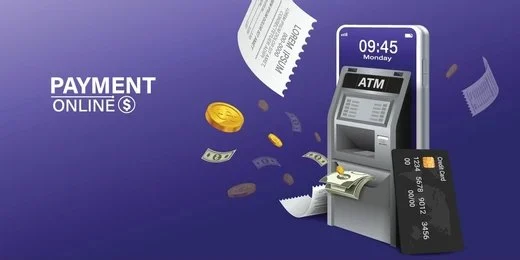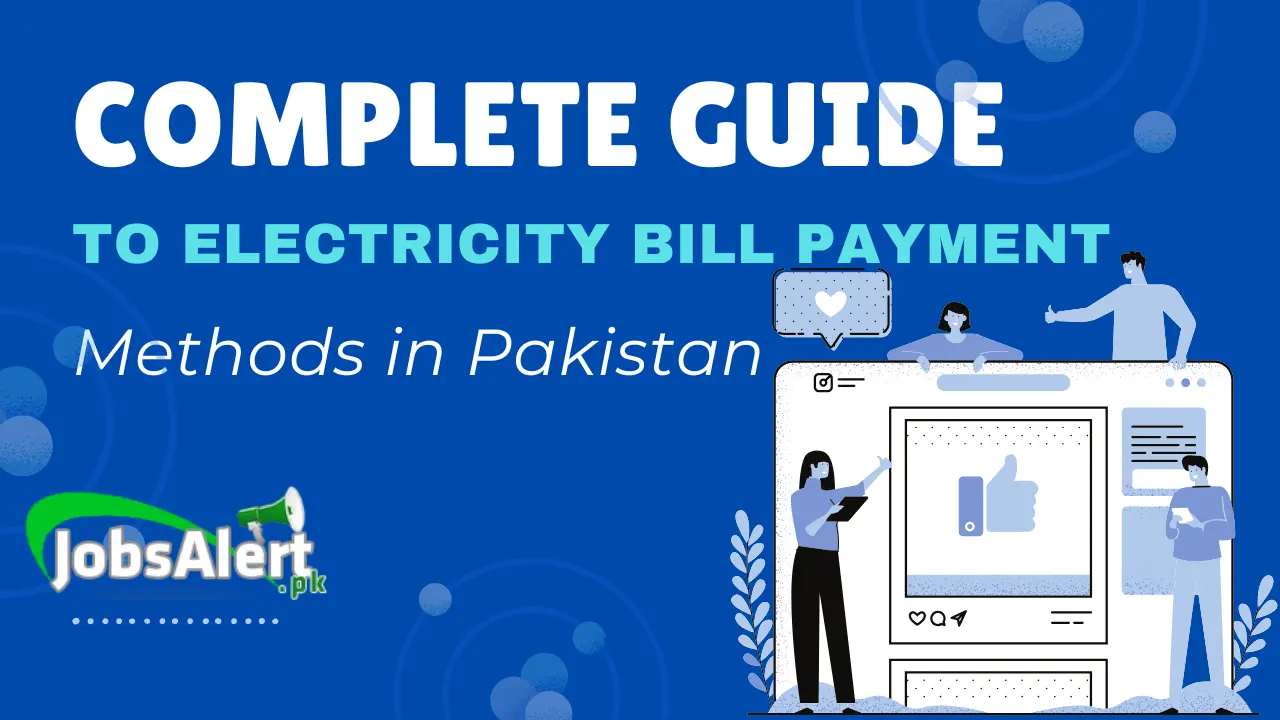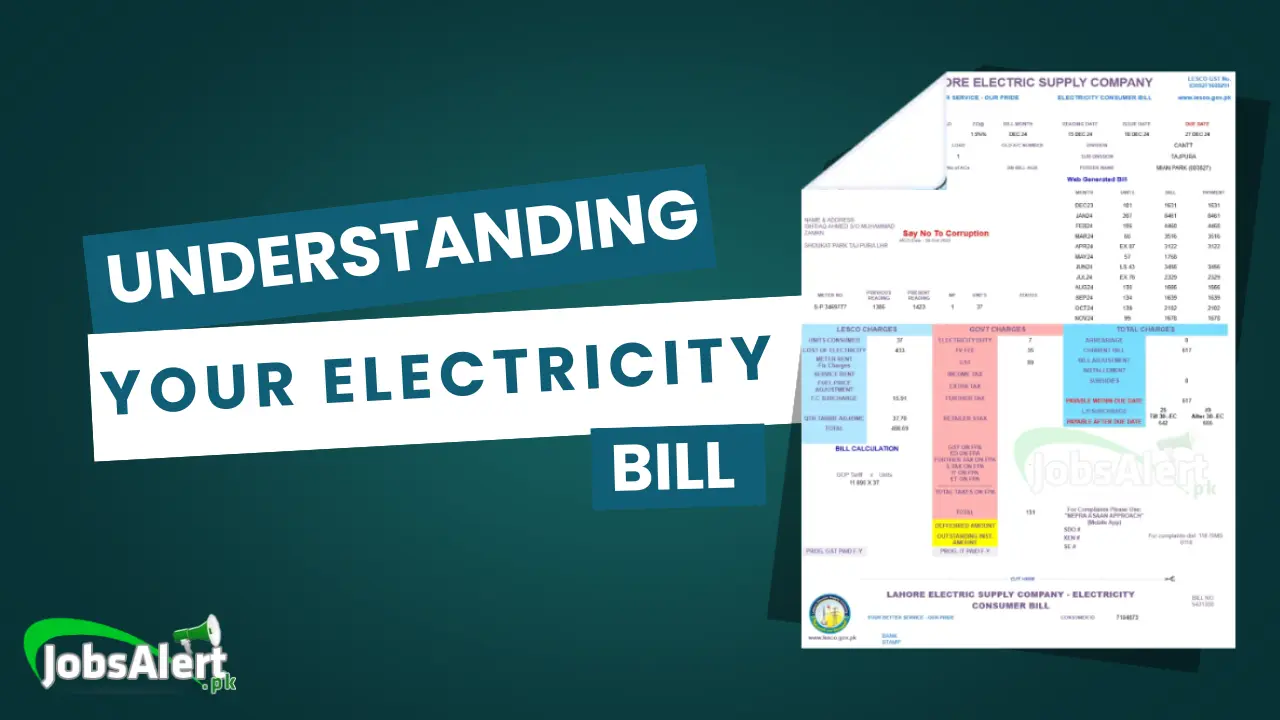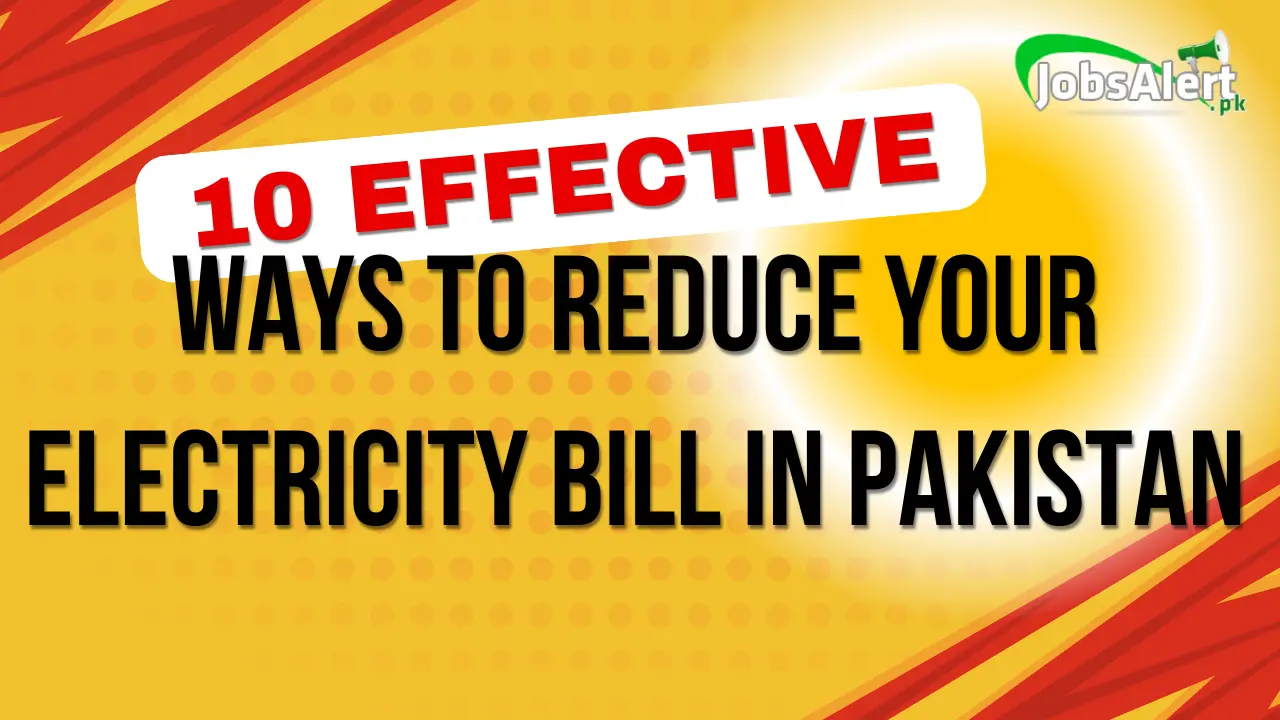Table of Contents
Introduction: The Evolution of Bill Payments in Pakistan
Gone are the days when paying your electricity bill meant standing in long queues at the bank or utility office. In 2025, Pakistan offers a wide array of convenient options for electricity bill payments, from digital solutions to traditional methods. This comprehensive guide will walk you through all available payment channels, helping you choose the one that best fits your needs.
With rising electricity costs, timely bill payment has become more important than ever. Late payments not only incur surcharges but can also lead to service disconnection. Understanding all your payment options ensures you can settle your bills on time, even during busy periods or when traveling.
Did you know? Over 65% of electricity bill payments in Pakistan are now made through digital channels, compared to just 15% in 2020. This rapid digital adoption has reduced the average bill payment time from several hours to just a few minutes.
1. Online Banking: The Convenient Solution
Online banking has revolutionized the bill payment process, allowing you to pay your electricity bills from anywhere, at any time.
How to Pay Through Online Banking
Most Pakistani banks offer electricity bill payment through their online banking portals. Here's a general process that applies to most banks:
- Log in to your online banking account
- Navigate to "Bill Payments" or "Utility Bills" section
- Select your electricity distribution company (LESCO, MEPCO, GEPCO, etc.)
- Enter your reference number or consumer number
- The system will fetch your bill details
- Verify the amount and confirm payment
- Save the transaction receipt for your records
Bank-Specific Guides
While the general process is similar, there are slight variations across different banks. Here are quick guides for Pakistan's major banks:
- Log in to HBL Mobile or Internet Banking
- Tap on "Pay Bills" from the dashboard
- Select "Utility Bills"
- Choose your electricity company
- Enter your Consumer Number or Reference Number
- Review bill details and tap "Pay Now"
- Confirm using OTP sent to your registered mobile number
- Log in to UBL Digital
- Select "Bill Payments" from the menu
- Click on "Pay Bills"
- Choose "Electricity" category
- Select your electricity provider
- Enter your Consumer ID/Reference Number
- Confirm payment after reviewing details
- Log in to MCB Mobile or Internet Banking
- Go to "Bill Payments"
- Select "Utility Bills"
- Choose your electricity distribution company
- Enter the Consumer ID or Reference Number
- Verify bill details and select "Pay Bill"
- Authenticate with your PIN or OTP
- Log in to Meezan Mobile Banking or Internet Banking
- Navigate to "Bill Payment"
- Select "Utility Bills"
- Choose your electricity company
- Enter the Consumer ID/Reference Number
- Verify bill amount and tap "Proceed"
- Confirm using your PIN
Advantages of Online Banking for Bill Payments
Pros
- 24/7 availability
- No need to visit branches
- Automatic record-keeping
- Option to schedule recurring payments
- Instant confirmation
- No additional fees (in most banks)
Cons
- Requires internet connection
- Need for online banking registration
- May face technical glitches during peak hours
- Some older users find it complex
2. Mobile Wallets: Pay on the Go
Mobile wallet applications have gained immense popularity in Pakistan for their ease of use and accessibility. These apps allow you to pay bills directly from your smartphone without needing a bank account.
Popular Mobile Wallet Options
JazzCash
One of Pakistan's largest mobile wallets with over 15 million active users.
How to pay electricity bills:- Open the JazzCash app
- Select "Bill Payments"
- Choose "Electricity Bills"
- Select your electricity provider
- Enter your Reference Number or Consumer ID
- Verify bill details and tap "Pay Now"
- Enter your MPIN to confirm
Easypaisa
Pakistan's first mobile wallet service with extensive nationwide coverage.
How to pay electricity bills:- Launch the Easypaisa app
- Tap on "Bill Payments"
- Select "Electricity"
- Choose your distribution company
- Enter your Reference Number
- Review the bill details
- Confirm payment with your MPIN
UPaisa
A growing mobile financial service provided by U Microfinance Bank.
How to pay electricity bills:- Open the UPaisa app
- Select "Bill Payment"
- Choose "Utility Bills"
- Select your electricity company
- Enter your Consumer Number
- Verify the amount and confirm
- Enter your 4-digit PIN
SadaPay
A newer digital wallet focused on modern design and user experience.
How to pay electricity bills:- Log in to the SadaPay app
- Tap on "Pay Bills"
- Select "Utility Bills"
- Choose your electricity provider
- Enter your Consumer ID
- Check bill details and tap "Pay"
- Confirm with biometric verification
Advantages of Using Mobile Wallets
Pros
- No bank account required
- Simple and intuitive interfaces
- Available on basic smartphones
- Often offer cashback and discounts
- Many agents available for cash deposits
- Bill payment history tracking
Cons
- Service charges may apply (Rs. 10-20 per transaction)
- Need to maintain wallet balance
- Transaction limits on basic accounts
- Requires smartphone and internet connection
- Some security concerns for non-tech-savvy users
3. ATM Bill Payments
Most major banks in Pakistan now offer electricity bill payment services through their ATM networks, combining the convenience of digital payments with the security of bank infrastructure.
How to Pay Electricity Bills at ATMs
The process is similar across most bank ATMs:
- Insert your ATM card and enter your PIN
- Select "Bill Payment" or "Other Services"
- Choose "Utility Bill Payments"
- Select your electricity distribution company
- Enter your Consumer Number or Reference Number
- Verify the bill details displayed on screen
- Confirm payment
- Collect your receipt (important for proof of payment)

Advantages of ATM Bill Payments
Pros
- No need for internet connection
- Widespread availability (24/7 access)
- Immediate payment confirmation
- Physical receipt provided
- Convenient for those uncomfortable with online methods
- No additional charges
Cons
- Requires physical travel to an ATM
- Limited to cardholders of the specific bank
- Possible queues during peak hours
- Risk of card skimming at unsecured ATMs
- Some ATMs may not support all distribution companies
4. Over-the-Counter Bank Payments
Traditional over-the-counter payments at bank branches remain a popular option, particularly for those who prefer face-to-face transactions or don't have access to digital alternatives.
How to Pay at Bank Branches
To pay your electricity bill at a bank branch:
- Take your electricity bill to any branch of a bank that accepts utility payments
- Fill out the utility bill payment form (available at the branch)
- Present the form along with the bill and payment amount to the cashier
- Make payment in cash or through your account if you're a customer of that bank
- Receive a stamped bill copy and payment receipt as proof of payment
Banks Authorized for Electricity Bill Collection
Most major banks in Pakistan are authorized to collect electricity bills, including:
HBL
UBL
MCB
ABL
NBP
Meezan
Advantages of Bank Branch Payments
Pros
- No digital literacy required
- Option to pay in cash
- Personal assistance available
- Immediate physical receipt
- Suitable for those without bank accounts or smartphones
- Can handle payment issues on the spot
Cons
- Limited to banking hours (typically 9 AM to 5 PM, Monday to Friday)
- Often involves waiting in queues
- Requires physical travel to the bank branch
- Some banks charge a small service fee (Rs. 10-20) for non-customers
- Need to carry the original bill
5. Direct Payment at Utility Offices
All electricity distribution companies maintain their own bill collection centers where consumers can pay their bills directly.
How to Pay at Utility Company Offices
The process for paying at utility offices is straightforward:
- Visit your nearest electricity company customer service center
- Present your bill at the payment counter
- Make payment in cash
- Receive a stamped bill copy or payment receipt
Advantages of Utility Office Payments
Pros
- Direct payment to the service provider
- Staff can help resolve billing queries immediately
- No service charges
- Suitable for consumers without bank accounts
- Can handle bill corrections or disputes on the spot
Cons
- Limited number of collection centers
- Often crowded with long waiting times
- Restricted to office hours (typically 9 AM to 4 PM)
- Cash-only payment in most cases
- May be located far from residential areas
6. Retail Payment Networks
Numerous retail networks and merchant shops across Pakistan now serve as bill collection points, bringing payment facilities closer to residential areas.
Major Retail Payment Networks
JazzCash Agents
With over 135,000 agents nationwide, JazzCash retail outlets can be found in nearly every neighborhood. Look for the red JazzCash signboard.
Payment Process:- Provide your bill or reference number to the agent
- The agent will verify your bill details on their system
- Pay the amount in cash
- Receive a printed receipt
Service charge: Usually Rs. 20 per bill
Easypaisa Shops
With a network of approximately 130,000 shops, Easypaisa offers widespread coverage across urban and rural areas.
Payment Process:- Share your reference number or physical bill with the agent
- The agent will process your payment on their Easypaisa system
- Make cash payment
- Collect your payment receipt
Service charge: Typically Rs. 20 per transaction
UPaisa Retailers
A growing network of retail agents serving as payment points for various bills including electricity.
Payment Process:- Provide your bill details to the UPaisa agent
- The agent will verify the bill information
- Pay the amount plus service charges in cash
- Receive payment confirmation
Service charge: Around Rs. 20 per bill
Neighborhood Utility Stores
Many local utility stores and post offices now offer bill payment services through various platforms.
Payment Process:- Visit any participating utility store
- Present your bill or reference number
- The shopkeeper will process the payment through their system
- Pay in cash and receive receipt
Service charge: Varies by location (Rs. 10-30)
Advantages of Retail Payment Networks
Pros
- Extensive coverage, even in rural areas
- Extended operating hours (often open until late evening)
- No bank account or smartphone required
- Close proximity to residential areas
- Accept cash payments
- Quick service with minimal waiting
Cons
- Service charges are typically higher (Rs. 20-30 per bill)
- Quality of service can vary between agents
- Some agents may be reluctant to process bills during peak hours
- Receipt quality may be poor (thermal paper fades over time)
- Limited recourse if payment issues arise
7. Post Office Bill Payment
Pakistan Post offers utility bill collection services through its extensive network of post offices across the country.
How to Pay at Post Offices
The process is similar to paying at a bank branch:
- Visit your nearest post office
- Present your electricity bill at the designated counter
- Pay the amount in cash
- Receive a stamped bill receipt as payment proof
Advantages of Post Office Payments
Pros
- Widespread network (over 12,000 post offices nationwide)
- Trusted government institution
- Low or no service charges
- Good coverage in rural areas where banks may be absent
- Accept cash payments
Cons
- Limited working hours (9 AM to 4 PM, Monday to Saturday)
- Often slower processing compared to other methods
- May have long queues
- Manual processing more prone to errors
- Limited to cash payments
8. Direct Debit / Standing Instructions
For the ultimate convenience, many banks offer direct debit or standing instructions facilities where your electricity bill is automatically paid from your account each month.
How to Set Up Direct Debit
To establish automatic bill payments:
- Visit your bank branch or log in to your online banking
- Request the "Standing Instructions" or "Direct Debit" form
- Fill in your electricity company details and consumer number
- Specify the account from which payments should be made
- Set any maximum limit (optional but recommended)
- Sign the authorization form
Once set up, your bank will automatically debit your account and pay your electricity bill when it becomes due, eliminating the need for manual payment each month.
Advantages of Direct Debit
Pros
- Completely automatic process - "set and forget"
- Never miss payment deadlines
- Avoid late payment penalties
- No need to remember payment dates
- Saves time and effort each month
- Usually free of charge
Cons
- Less control over payment timing
- Need to maintain sufficient account balance
- May not notice billing errors automatically
- Setup process can be cumbersome
- Cancellation may require visiting the bank
- Not all electricity companies support direct debit
Comparison of Payment Methods
Here's a quick comparison to help you choose the most suitable payment method for your needs:
| Payment Method | Convenience | Speed | Access Requirement | Service Charges | Best For |
|---|---|---|---|---|---|
| Online Banking | High | Instant | Internet + Bank Account | None | Tech-savvy users with bank accounts |
| Mobile Wallets | Very High | Instant | Smartphone + Internet | Rs. 10-20 | Smartphone users, even without bank accounts |
| ATM Payment | Medium-High | Instant | ATM Card | None | Bank customers who prefer physical transactions |
| Bank Branches | Low | Same Day | Physical Visit | 0-20 (varies) | Those who prefer face-to-face banking |
| Utility Offices | Low | Immediate | Physical Visit | None | Those with billing issues to resolve |
| Retail Agents | Medium-High | Immediate | Physical Visit | Rs. 20-30 | Cash users, no bank account needed |
| Post Offices | Medium | 1-2 Days | Physical Visit | Minimal | Rural areas with limited banking access |
| Direct Debit | Very High | Automatic | Bank Account | None | Regular bill payers who want automation |
Essential Tips for Electricity Bill Payments
Pay Before the Due Date
Always pay your bill at least 2-3 days before the due date to allow for processing time. Late payments can result in:
- Late payment surcharge (typically 10%)
- Possible disconnection for repeated late payments
- Negative impact on your payment history
Keep Payment Receipts
Always save your payment receipts for at least 3 months. In case of payment disputes, you'll need proof of payment showing:
- Transaction ID or reference number
- Date and time of payment
- Amount paid
- Consumer/reference number
Verify Bill Details Before Payment
Always double-check these details before making payment:
- Correct consumer name and ID
- Billing period matches your expectation
- Units consumed seem reasonable compared to your usage
- Amount due matches what you expect to pay
Consider Payment Timing
Strategic timing can improve your payment experience:
- Avoid month-end when systems are busy
- Pay during off-peak hours for online systems
- For bank branches, mid-month mornings have shorter queues
- Allow 24-48 hours for payments to reflect in the system
Future of Electricity Bill Payments in Pakistan
The bill payment landscape in Pakistan continues to evolve rapidly. Here are some emerging trends to watch:
QR Code Payments
Many electricity bills now include QR codes that can be scanned with mobile apps for instant payment. This technology eliminates the need to enter reference numbers manually and reduces errors.
Smart Metering Integration
Smart meters being deployed across Pakistan will enable real-time consumption monitoring and automatic billing. Some systems will allow pre-payment options similar to mobile phone credits.
Biometric Verification
Enhanced security through biometric verification is being integrated into payment systems, especially for large transactions, ensuring better security and reducing fraud.
Conclusion: Choosing the Right Payment Method
With so many options available, the best electricity bill payment method depends on your personal circumstances, preferences, and technical comfort level.
- For digital natives: Mobile wallets and online banking offer the most convenience and speed
- For those without smartphones: ATMs and retail agents provide accessible alternatives
- For those who prefer traditional methods: Bank branches and post offices remain viable options
- For those seeking maximum convenience: Direct debit arrangements eliminate the need for monthly action
Regardless of your preferred method, paying bills on time is crucial to avoid penalties and service interruptions. Many consumers actually use a combination of methods, having a primary payment channel and a backup for emergencies.
For more information about understanding your electricity bill, check our guide on Understanding Your Electricity Bill Components, or learn about ways to reduce your bill in our article on 10 Effective Ways to Reduce Your Electricity Bill in Pakistan.



Comments
Comments are currently disabled for this article.